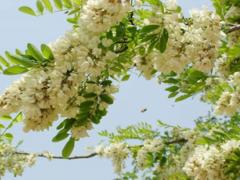
CAS No.: 153-18-4
Part: Flower Bud
Active Ingredient: Rutin
Botanical Source: Styphnolobium japonicum (L.) Schott
Specifications: NF 11,DAB 9, DAB 10,EP 4, EP 6
Function and Application:
1. Anti-inflammatory action: apparent suppression of inflammation due to planted wool when the product is injected into abdominal cavity[8]. Sodium rutin sulfate has very strong anti-inflammatory action to edema in rat[9].
2. Vitamin P like action: maintain the strength of blood vessel, reduce its permeability and brittleness; degreasing action to liver soaked in fat, esp. when used with glutathione.
3. Antiviral action: best suppression to phlyctenular stomatitis virus at product concentration of 200g/ml[10, 11].
4. Inhibition of aldehyde reductase: 95% inhibition at a concentration of 10^-5M [12], which facilitates the treatment of diabetic cataract.
5. Toxicity: mice, intravenous injection, LD50: 950mg/kg.
6. Clinic use: for the prevention of intracerebral hemorrhage, hypertension, retinal hemorrhage, purpura and acute hemorrhagic nephrosonephritis; for treatment of chronic tracheitis with effective rate at 84.8% and 98%. Its derivative, troxerutin, or Venoruton, is applied clinically for burn, arthritis, and all kinds of blood vessel diseases. Commodity drug is available abroad[14], while the drug has been successfully developed in the nation. Effective rate for cerebrovascular diseases is 87.8%; 88% for retinal edema and hemorrhage[3]. |